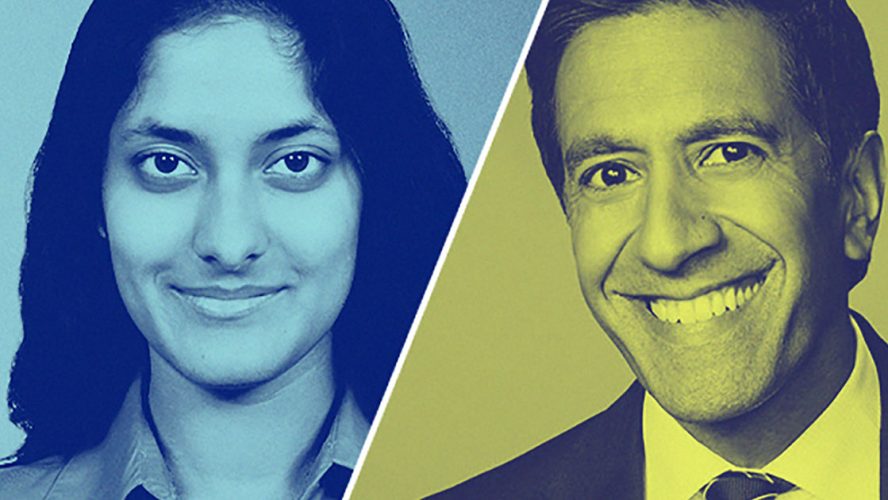Telemedicine has been around, but advancements in technology have made it even more widely available. We sat down with Dr. Sanjay Gupta and Dr. Shruti Chandra and asked what’s next.
1. What is telehealth?
Telehealth encompasses a wide variety of technologies to deliver care services. So long as you have a laptop or smartphone, a Skype account and a working internet connection, you can consult your dentist, OB-GYN or therapist without leaving your living room.
“In the world of telehealth, the doctor will always make a house call by mobile device or other technological means,” says Dr. Sanjay Gupta, CNN chief medical correspondent. “Surely, this is a way to improve the global health of the world.”
2. How is telehealth changing the medical industry?
“Telehealth is revolutionizing health care and its delivery by connecting patients and providers quickly, efficiently and at low costs,” says Dr. Shruti Chandra of Thomas Jefferson University Hospital.
The adoption of telemedicine by both doctors and consumers is growing at a rapid rate. As reported by American Well, 67 percent of health care professionals are either using some form of telemedicine now or are planning to in the next few years, and 64 percent of consumers are willing to have a video visit with a doctor. Telehealth has proven effective in the management of long-term health conditions, including chronic obstructive pulmonary disease, diabetes, chronic heart failure and epilepsy.
“It will revolutionize the industry,” Gupta believes. “If you have an established relationship with your doctor and they are available via mobile health, then continuity of care is a big win for you.”
3. What do health care professionals need to know?
As the demand for these services rises, certification programs for telehealth are being introduced to further develop individual and team skills. “As telehealth expands and is adopted by more hospitals, offices and health care facilities, there is an emerging need for trained professionals who will effectively and efficiently deliver these services,” Dr. Chandra explains. “No telehealth program can be sustainable without trained individuals with formal education.”
These courses educate participants on the steps for successfully implementing and managing a telehealth program. “By adding telehealth as a skill set in their toolbox, health care professionals can practice, create and support telehealth and related programs,” Dr. Chandra continues. “Telehealth trained individuals can be facilitators and coordinators, telehealth practicing professionals and telehealth educators, as well as telehealth program developers and innovators.”

